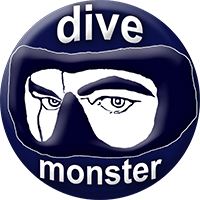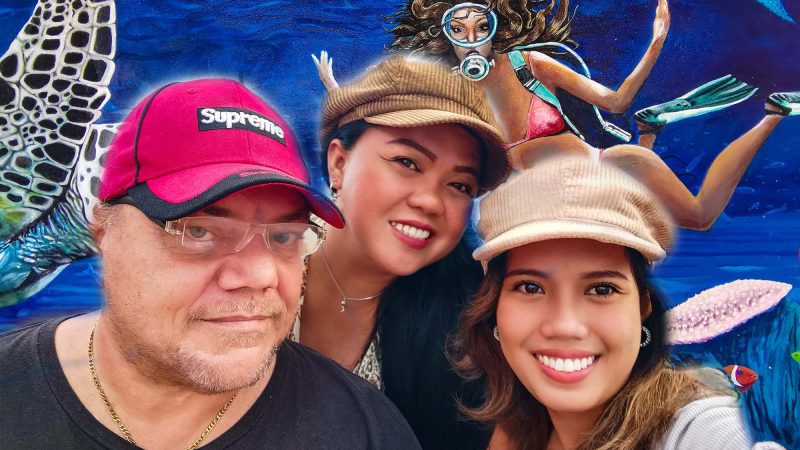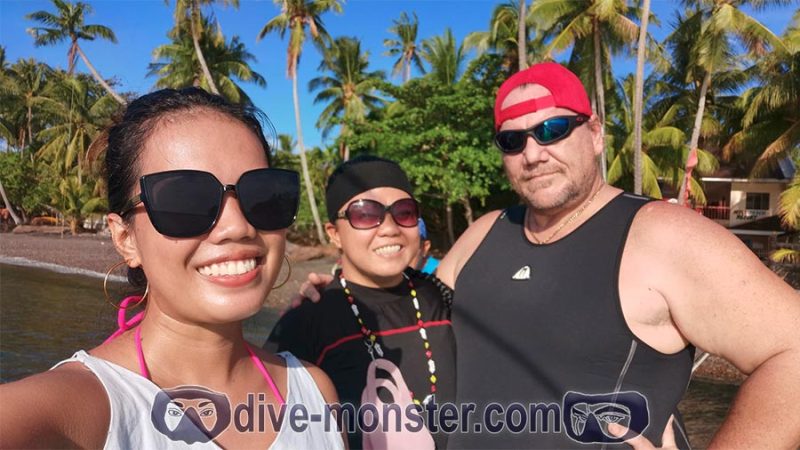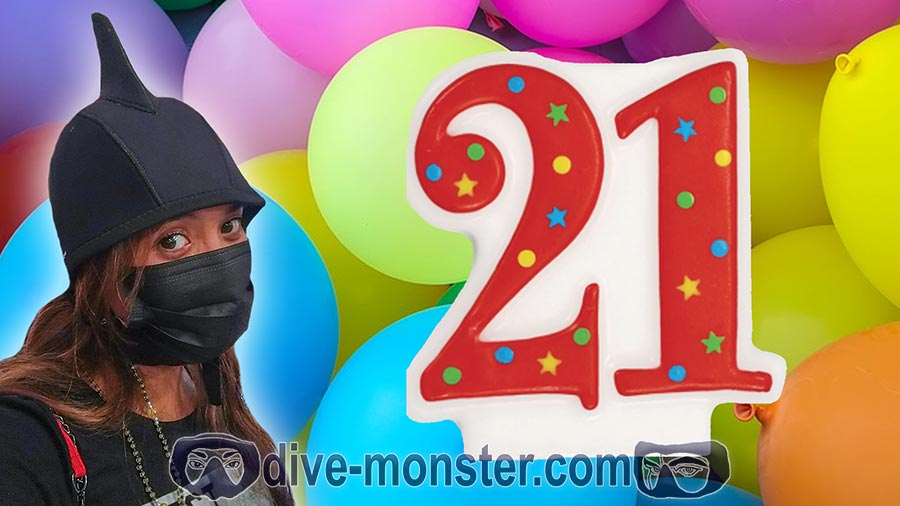While diving the golden sands Dauin, the Dive Monsters came upon a very cute family of clownfish a.k.a. “Nemo”. In the middle of the sandy bottom of about 10 meters deep, a small anemone (Stichodactyla) stood tall protecting a family of saddleback clownfish and their baby eggs. We approached them as gently as possible and watched for the next 10 minutes how wonderful these funny fish are.
Saddleback Clownfish (Amphiprion polymnus)
One can never get enough of a clownfish! But, did you know that there are more than one kind of clownfish? The Saddleback Clownfish belongs to the polymnus group. This means it belongs to the group of small fishes that grows up to 13 centimeters or 5.1 inches. There are many anemonefish groups wherein the female is always bigger than the male. However, the saddleback clownfish is almost equal in size to the female.

When it comes to reproducing, clownfish are not well known for using the bed. They just chase around and lay the eggs. Then they release their liquids to fertilize the eggs. Clownfish lay their eggs in batches on coral, rock or next to the sea anemone that they call home. The male clownfish will build a nest on the rock or coral near the anemone in order to be provided with protection from predators. Breeding starts by the male chasing the female to the nest where the eggs are released. One hundred to one thousand eggs are laid. The male clownfish guards and protects the eggs until they hatch. They hatch within 4 to 5 days. Spawning season or breading season is all year round. We don’t have to worry about them going extinct…not yet maybe.
They are well known characterized with their large white abbreviated saddle shape or slanted white bar across the middle of the fish’s body makes it quite obvious to see how it got the name Saddleback. They are oval shaped, compressed laterally and with a round profile. The body color ranges from dark brown to yellow orange and this species has two or three white bars. The white head bar is thick and located just behind the eyes. Depending on the depth, you might want to bring a diving light/torch to see their bright orange popping.
Home, Diet & Sex Life of a Saddleback Fish!
Saddlebacks are usually found in silty lagoons and harbor areas in depth range from 2-30 meters (6.6-98 feet). They live mostly in the warmer waters of the Pacific Ocean and Indian Ocean. They host on anemones mostly Heteractis crispa Sebae anemone (rarely) and Stichodactyla haddoni (Saddle carpet anemone). In regard to their diet, saddleback clownfish loves a healthy balanced meal. They are omnivorous just like any other polymnus. Some algae, zooplankton, and small benthic crustaceans should do the trick! However, some divers claim that they like annoying divers too. They are not afraid to nibble away your finger or neoprene if they feel threatened or hungry. By then, “clownfish”
Clownfish – Protectors of Babies and Homes!!!
In the video below, you will see how protective a parent and clownfish can be. We approached them with our GoPro HERO 7 Black Camera with utmost care. So sit back…relax…and enjoy the video!









